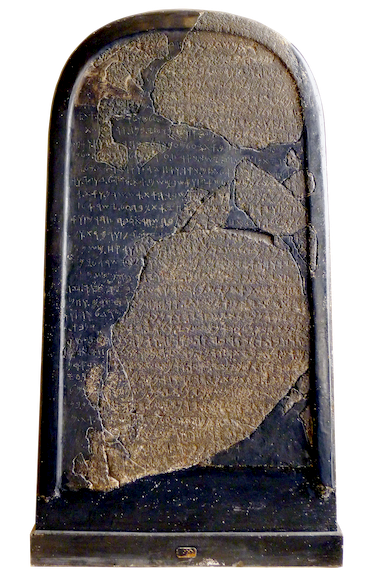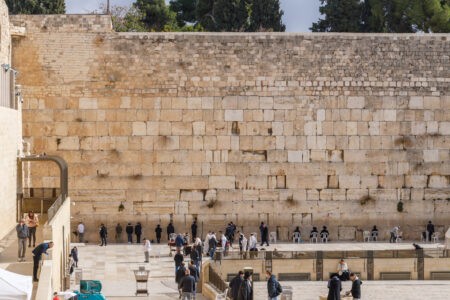Israel
- 4500-3500 BCE Pre History: Chalcolithic Period
- 3500-1150 BCE Bronze Age (Canaanite period)
- 1150-1000 BCE Iron Age I The period of the Settlement and Judges
- 1000–586 BCE Iron Age II - King David and the First Temple Period
- 539 BCE - 70 CE Return to Zion and the Second Temple Period
- 70–638 CE Roman and Byzantine periods
- 638–1516 Middle Ages
- 1516 to present Ottoman Period and Modern Era
Period of Hezekiah and Isaiah
Early Roman period
In 63 BCE, when the Hasmoneans were fighting with each other to rule, the land was conquered by the Roman general Pompey, who was invited by the warring parties to judge between them. Thus began the Early Roman period in this country; from then on the Hasmoneans were under Roman authority.
In 37 BCE Herod the Great began to rule under the aegis of Rome, and he beautified Jerusalem and the Temple Mount. When he died, his son Archelaeus was made king of Judea, but then the Romans removed him from power. From 6 BCE to 41 CE, Roman governors ruled Judea.
In 41 BCE, Agrippa, grandson of Herod the Great was granted rule over Judea and reigned until 44 CE. When he died, Rome once again took over through its governors. Roman oppression and Jewish anticipation of redemption led to the outbreak of the Great Revolt of the Jews against the Romans, which ended with the destruction of the Temple in the Hebrew month of Av, 70 CE.
READ MOREDestruction of the Second Temple
With the outbreak of the Great Revolt against the Romans in 66 CE, a huge Roman army reached the country (at its height, it numbered some 60,000 warriors), bent on cruelly crushing the revolt. In the following years the entire country was conquered by the Romans and in the Hebrew month of Nissan, 70 CE, the siege of Jerusalem began.
In the month of Av, the Romans under the command of Titus set fire to the Temple and a month later they destroyed Jerusalem’s upper city, which faced the Temple Mount. Thus the Second Temple period, which had lasted for almost 600 years, came to an end.
Late Roman period
After the destruction of Jerusalem in 70 CE, the Romans ruled the city, and the Tenth Legion was apparently stationed near the present-day Jaffa Gate. Only during the time of Hadrian (the early second century CE) did the Romans begin to build Jerusalem as a pagan city, called Aelia Capitolina, with a network of streets and pagan temples.
The ruined City of David was quarried by the Romans for building stones for the Roman city. In 132 CE, the Bar Kokhba Revolt broke out, perhaps in response to the transformation of Jerusalem into a pagan city, and was brutally suppressed by the Romans. Officially, Jews were banned from residing in the city, but there is evidence that Jews lived there as well as visited.
Crusader period
In 1099 the Crusaders conquered Jerusalem and massacred both its Jewish and its Muslim inhabitants. The Crusaders ruled the city until 1187, when their kingdom was taken by the Muslim leader Saladin al-Ayyubi. In 1192 the Crusaders founded a second kingdom, smaller in size, which was destroyed by the Mamluk Muslims in 1291.
Jerusalem was the capital of the first Crusader kingdom, but during the second Crusader kingdom they ruled only part of the city for only 15 years, and moved their capital to Acre. In Jerusalem they built markets, churches and hospitals within city limits that were about the same size as the Old City of today.
Throughout most of this period Jews were not allowed to live in the city, but toward the end a small number were given permission to live near the Tower of David, near the king’s palace.
Ayyubid period
The Ayyubids, Saladin and his descendants, ruled in Jerusalem and parts of the Land of Israel from the end of the twelfth century until the mid-thirteenth century. At the same time the second Crusader kingdom was ruling other parts of the country.
READ MOREOttoman Turkish period
In 1516 the land was conquered by the Ottoman Turkish Empire. During the sixteenth century the Ottomans imposed restrictions on the Jews in Jerusalem, which made possible the golden age in Safed. During the time of Suleiman the Lawgiver the Ottomans fortified Jerusalem and Safed, built caravansaries, fortresses and more.
However, at the end of the sixteenth century the first signs of the decline of the Ottoman Empire and the entire country were already visible, a decline that persisted until the nineteenth century. During this time, thanks to the involvement of the great powers of the day and increasing modernization (steamships, the telegraph and trains), the Land of Israel went from the neglected backwater of the empire to a lodestone for pilgrims, scholars and tourists.
Scientific study of this country began in the nineteenth century, at the end of which the first neighborhoods were built outside the walls of Jerusalem and the Zionist waves of immigrations began. The status of Jerusalem grew stronger and its population increased. In 1839 Jews were a majority in the city and in 1870, the Jewish community was bigger than all the other communities together (11,000 out of a total population of 22,000). At the beginning of the twentieth century, a great deal of land was purchased in the City of David by the Baron Rothschild, and ownership of these lands was later transferred to the State of Israel.
READ MOREWar of Independence and the State of Israel
On November 29, 1947, the land was divided between the Jews and the Arabs according to a United Nations resolution. The Arabs, who refused to accept the resolution, launched a war. On the eve of the War of Independence there were approximately 100,000 Jews living in Jerusalem out of a countrywide total of 600,000 Jews. As the Arabs besieged the city, great efforts were made to prevent its fall, out of the realization of Jerusalem’s special status and its importance to the steadfastness of the entire Jewish community.
READ MORE















